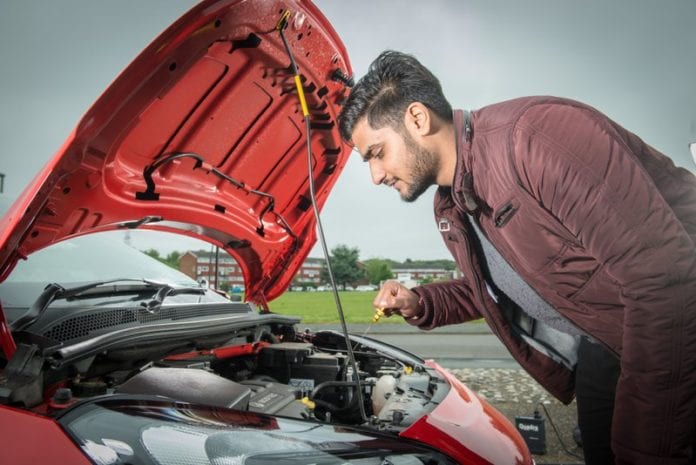It’s important to know what to look for when buying a used car. If you don’t make the right checks and look through the paperwork carefully, you could make a costly mistake.
Checking a car over before buying it doesn’t have to be complicated. Here are some of the things to look out for…
The V5C
The log book or V5C is important because it shows who is the registered keeper of the car. If you are buying a car privately, and the person who is selling the car isn’t the person on the V5C, this should set alarm bells ringing.
As well as showing that the seller has the right to sell the car, the V5C will tell you the car’s Vehicle Identification Number (VIN). Make sure this tallies with the VIN on the car, which you can usually find at the base of the windscreen. If the two numbers don’t match the logbook isn’t for the car you are looking at. So politely make your excuses and walk away.
Assuming everything does match up and you go on to buy the car, the previous owner should give you the green ‘new keeper’ slip from the logbook. They should also give your details to the DVLA, who will send you a new V5C. You should have it within three to five days.
MOT
Any used car between three and 40 years old needs to have an MOT once a year. The MOT test is proof that the car is safe and roadworthy.
It’s important to look for a used car with a valid MOT. Without one, it shouldn’t be on the road. It’s easy enough to check online through the gov.uk website. This will tell you if the car has an MOT, when it was lasted tested, and when the certificate expires. It will also tell you about previous tests, and the reason for any failures. You can also check if there are any outstanding safety recalls that need attending to.
Any ‘advisories’ on the most recent MOT are also handy to know, as these flag up faults that aren’t serious enough for a failure but could need attention in the future.
Ask the seller whether these more minor faults have been fixed since the MOT test.
Service history
All cars have a service schedule, set out by the manufacturer. Typically a service is due once a year, although this will vary depending on the make and model.
A careful owner won’t skip services, so check the service book to find out if the car has been serviced on time. If you are buying a car that’s been on the road for many years one or two missed services aren’t the end of the world, but that should be reflected in the car’s asking price. For peace of mind, it’s always better to buy a used car with a full-service history if you can find one.
History check
Servicing isn’t the only aspect of a car’s past you’ll want to check. There are lots of companies online who will check that the car hasn’t been written off (damaged beyond economic repair), stolen and that there’s no outstanding finance owed on it.
Inspect the car
If the paperwork is in order you can turn your attention to the car itself. When buying a used car, you aren’t looking for perfection, but you are looking for a car that’s in good nick for its age and mileage. You should check over every aspect of the car as thoroughly as you can. Here are some of the key things to look for…
- Alloy wheels: are they scuffed or dented?
- Tyres: do they have plenty of tread left?
- Bodywork: are there dents, signs of rust, or evidence of poor-quality repairs?
- Engine: does it start first time?
- Oil: is there enough to protect the engine?
- Electrics: do all the switches work as they should?
- Coolant: has it turned milky, which could be a sign of expensive engine trouble?
- Interior: is there damage to the cabin or the seats?
The test drive
Now to the fun part – the test drive!
There are lots of things to consider when taking a test drive. You want to be sure that you are comfortable driving the car, while also keeping an eye out for any faults.
Here are some of the things to look for when test-driving a used car…
- Steering: does the car pull to the left or right?
- Clutch: does the engine rev without the car building speed, which could be a sign of a worn clutch?
- Gear change: does the car change gear smoothly?
- Brakes: are the brakes effective, and does the car pull up straight?
- Engine and transmission: are there any odd noises, or signs of smoke coming from the exhaust?
Also, before you go out on the road make sure you are insured to drive the car. Quick cover can be arranged with the likes of Cuvva and RAC Test Drive Insurance.
If all goes well when you check over the paperwork, and the car, and take a test drive, then it looks like you are ready to buy your first car!


